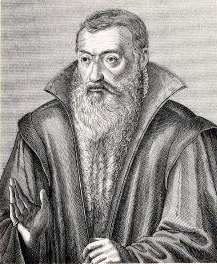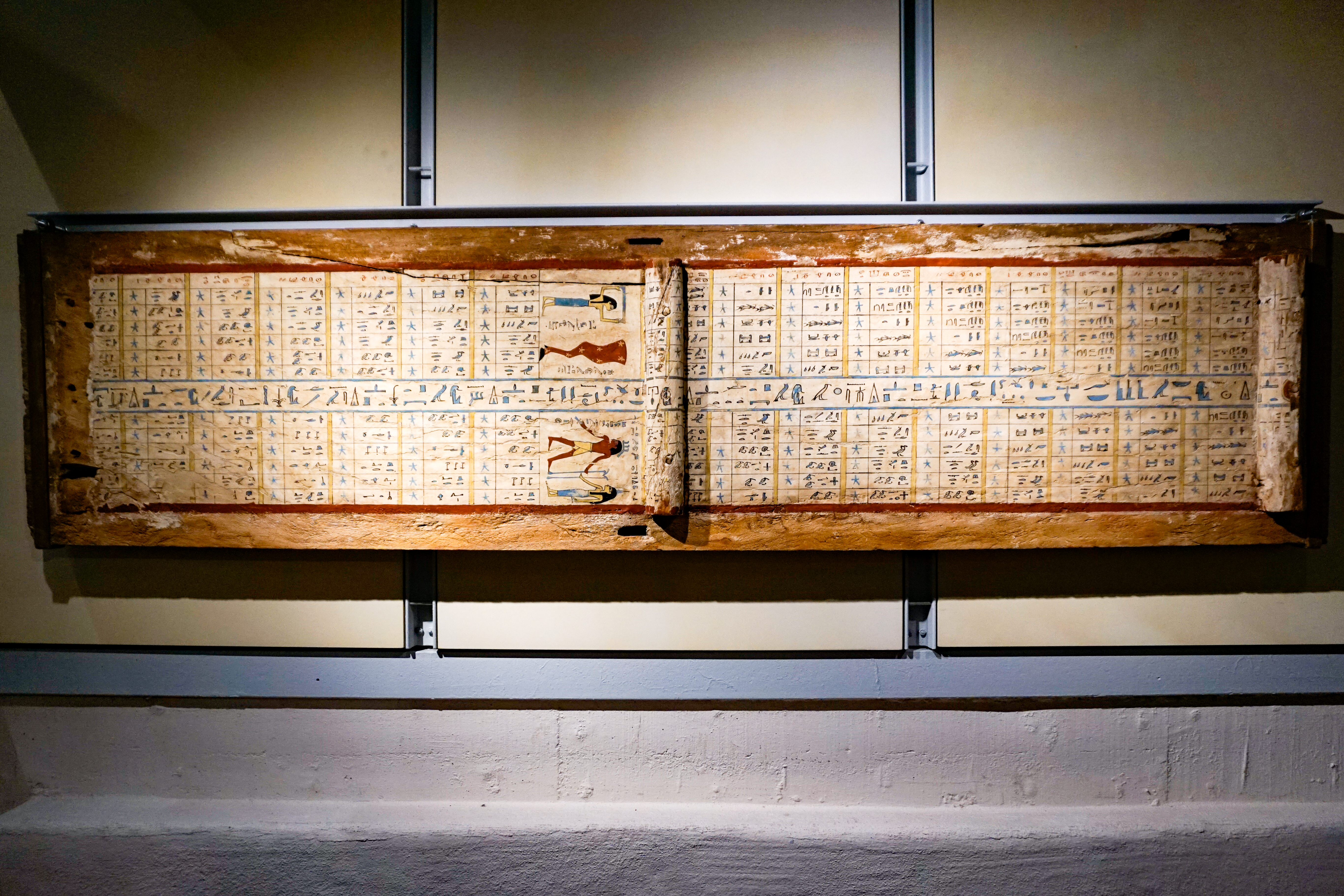|
Augustus The Younger, Duke Of Brunswick-Lüneburg
Augustus II (10 April 1579 – 17 September 1666), called the Younger (), a member of the House of Welf was Duke of Brunswick-Lüneburg. In the estate division of the House of Welf of 1635, he received the Principality of Wolfenbüttel which he ruled until his death. Considered one of the most literate princes of his time, he is known for founding the Herzog August Library at his Wolfenbüttel residence, then the largest collection of books and manuscripts north of the Alps. Life Augustus was born at Dannenberg Castle, the seventh child of Duke Henry of Brunswick-Lüneburg (1533–1598). His father had ruled over the Brunswick Principality of Lüneburg, jointly with his younger brother William, since 1559. Ten years later, however, upon his marriage with Ursula, a daughter of the Ascanian duke Francis I of Saxe-Lauenburg, he had to waive all rights and claims and was compensated with the small Dannenberg lordship. Moreover, he received an annual payment and had r ... [...More Info...] [...Related Items...] OR: [Wikipedia] [Google] [Baidu] |
Duchy Of Brunswick-Lüneburg
The Duchy of Brunswick and Lüneburg (), commonly known as the Duchy of Brunswick-Lüneburg or Brunswick-Lüneburg, was an imperial principality of the Holy Roman Empire in the territory of present day Lower Saxony. In 1235, Otto I, Duke of Brunswick-Lüneburg, Otto I was Feoffment, enfeoffed with the newly founded Duchy of Brunswick-Lüneburg at the Court of Mainz. It was based on the two castles in County of Brunswick, Brunswick and Lüneburg and the associated estate of the House of Welf. In 1269 there was a first division between the brothers Albert I, Duke of Brunswick, Albrecht and John, Duke of Brunswick-Lüneburg, Johann. The resulting principalities of Brunswick and Lüneburg together continued to form the Duchy of Brunswick-Lüneburg. The history of the duchy and the constituent principalities was marked by further divisions and mergers of the principalities. The constituent principalities existed until the end of the Holy Roman Empire in 1806. At the Congress of Vi ... [...More Info...] [...Related Items...] OR: [Wikipedia] [Google] [Baidu] |
Principality Of Brunswick-Wolfenbüttel
The Principality of Brunswick-Wolfenbüttel () was a subdivision of the Duchy of Brunswick-Lüneburg, whose history was characterised by numerous divisions and reunifications. It had an area of 3,828 square kilometres in the mid 17th century. Various dynastic lines of the House of Welf ruled Brunswick-Wolfenbüttel until the dissolution of the Holy Roman Empire in 1806. As a result of the Congress of Vienna, its successor state, the Duchy of Brunswick, was created in 1815. History Middle Ages After Otto the Child, grandchild of Henry the Lion, had been given the former allodial seat of his family (located in the area of present-day eastern Lower Saxony and northern Saxony-Anhalt) by Emperor Frederick II on 21 August 1235 as an imperial enfeoffment under the name of the Duchy of Brunswick-Lüneburg, the duchy was divided in 1267–1269 by his sons. Albert I (also called Albert the Tall) (1236–1279) was given the regions around Brunswick-Wolfenbüttel, Einbeck-Grube ... [...More Info...] [...Related Items...] OR: [Wikipedia] [Google] [Baidu] |
Early Modern France
The Kingdom of France in the early modern period, from the French Renaissance, Renaissance () to the French Revolution, Revolution (1789–1804), was a monarchy ruled by the House of Bourbon (a Capetian dynasty, Capetian cadet branch). This corresponds to the so-called ''Ancien Régime'' ("old rule"). The territory of France during this period territorial evolution of France, increased until it included essentially the extent of the France, modern country, and it also included the territories of the French colonization of the Americas, first French colonial empire overseas. The period is dominated by the figure of the "Sun King", Louis XIV (his reign of 1643–1715 being one of the List of longest-reigning monarchs, longest in history), who managed to eliminate the remnants of medieval France, medieval feudalism and established a centralized government, centralized state under an absolute monarchy, absolute monarch, a system that would endure until the French Revolution and First ... [...More Info...] [...Related Items...] OR: [Wikipedia] [Google] [Baidu] |
Kingdom Of Italy (Holy Roman Empire)
The Kingdom of Italy ( or ; ; ), also called Imperial Italy (; ), was one of the constituent kingdoms of the Holy Roman Empire, along with the kingdoms of Germany, Bohemia, and Burgundy. It originally comprised large parts of northern and central Italy. Its original capital was Pavia until the 11th century. Following the fall of the Western Roman Empire in 476 and the brief rule of Odoacer, Italy was ruled by the Ostrogoths and later the Lombards. In 773, Charlemagne, the king of the Franks, crossed the Alps and invaded the Lombard kingdom, which encompassed all of Italy except the Duchy of Rome, the Republic of Venice and the Byzantine possessions in the south. In June 774, the kingdom collapsed and the Franks became masters of northern Italy. The southern areas remained under Lombard control, as the Duchy of Benevento was changed into the independent Principality of Benevento. Charlemagne called himself king of the Lombards and in 800 was crowned emperor in Rome. Membe ... [...More Info...] [...Related Items...] OR: [Wikipedia] [Google] [Baidu] |
University Of Strasbourg
The University of Strasbourg (, Unistra) is a public research university located in Strasbourg, France, with over 52,000 students and 3,300 researchers. Founded in the 16th century by Johannes Sturm, it was a center of intellectual life during the Age of Enlightenment. The old university was split into three separate entities in the 1970s before merging back together in 2009. Today, the University of Strasbourg comprises 35 academic faculties, schools, and institutes, as well as 71 research laboratories spread across six campuses, including the historic site in the Neustadt. Throughout its existence, Unistra alumni, faculty, or researchers have included 18 Nobel laureates, two Fields Medalists and a wide range of notable individuals in their respective fields. Among them are Goethe, statesman Robert Schuman, historian Marc Bloch and several chemists such as Louis Pasteur. History The university emerged from the Jean Sturm Gymnasium, a gymnasium of Lutheran and humanist ins ... [...More Info...] [...Related Items...] OR: [Wikipedia] [Google] [Baidu] |
University Of Tübingen
The University of Tübingen, officially the Eberhard Karl University of Tübingen (; ), is a public research university located in the city of Tübingen, Baden-Württemberg, Germany. The University of Tübingen is one of eleven German Excellence Universities. The University of Tübingen is especially known as a centre for the study of plant biology, medicine, law, archeology, ancient cultures, philosophy, theology, religious studies, humanities, and more recently as a center of excellence for artificial intelligence. The university's noted alumni and faculty include presidents, a pope, EU Commissioners, judges of the Federal Constitutional Court, and Johannes Kepler. The university is associated with eleven List of Nobel laureates, Nobel laureates, especially in the fields of medicine and chemistry. History The University of Tübingen was founded in 1477 by Count Eberhard I, Duke of Württemberg, Eberhard V (Eberhard im Bart, 1445–1496), later the first Duke of Württemberg ... [...More Info...] [...Related Items...] OR: [Wikipedia] [Google] [Baidu] |
University Of Rostock
The University of Rostock () is a public university located in Rostock, Mecklenburg-Vorpommern, Germany. Founded in 1419, it is the third-oldest university in Germany. It is the oldest university in continental northern Europe and the Baltic Sea area, and 8th oldest in Central Europe. It was the 5th university established in the Holy Roman Empire. The university has been associated with three Nobel laureates: Albrecht Kossel, Karl von Frisch and Otto Stern. It is a member of the European University Association. According to a ranking published by ''Times Higher Education'' in 2018, it is the most beautiful university in Germany and the fourth most beautiful university in all of Europe. The language of instruction is usually German, and English for some postgraduate studies. History 1419–1919 The university was founded in 1419 by confirmation of Pope Martin V and thus is one of the oldest universities in Northern Europe. In Germany, there are only five universities that ... [...More Info...] [...Related Items...] OR: [Wikipedia] [Google] [Baidu] |
Francis I, Duke Of Saxe-Lauenburg
Francis I of Saxe-Lauenburg (1510 – 19 March 1581, Buxtehude) was the eldest child and only son of Duke Magnus I of Saxe-Lauenburg and Catherine of Brunswick-Wolfenbüttel (1488 – 29 July 1563, Neuhaus), daughter of Duke Henry IV ''the Elder'' of Brunswick and Lunenburg (Wolfenbüttel). Francis I succeeded his father in 1543 as duke of Saxe-Lauenburg, but resigned in favour of his major son Magnus II in 1571. Two years later he reascended and was succeeded by Francis II in 1581. Life With his thriftiness Francis I deeply plunged Saxe-Lauenburg into debts, to this end he pawned most of the ducal demesnes to his creditors. In 1550 Francis I wielded his influence to make the chapter of the neighbouring Prince-Bishopric of Ratzeburg elect his 7-year-old son Magnus as coming prince-bishop, however, the capitular canons refused. Heavily indebted and with no further need for good relations with the prince-bishopric Francis I looted Ratzeburg Cathedral in 1552. In 15 ... [...More Info...] [...Related Items...] OR: [Wikipedia] [Google] [Baidu] |
House Of Ascania
The House of Ascania () was a dynasty of German rulers. It is also known as the House of Anhalt, which refers to its longest-held possession, Principality of Anhalt, Anhalt. The Ascanians are named after Ascania (or Ascaria) Castle, known as ''Schloss Askanien'' in German, which was located near and named after Aschersleben. The castle was the seat of the County of Ascania, a title that was later subsumed into the titles of the princes of Anhalt. History File:Schloss Ballenstedt, Hofseite.JPG, Ballenstedt Castle File:Arms of the house of Ascania (ancient).svg, First coat of arms of the family Map of Anhalt (1747-1793).svg, Map of Anhalt (1747–1793) The earliest known member of the house, Esiko, Count of Ballenstedt, first appears in a document of 1036. Genealogists assume him to have been a grandson (through his mother) of Odo I, Margrave of the Saxon Ostmark (). From Odo, the Ascanians inherited large properties in the Saxon Eastern March. Esiko's grandson Otto, Count of ... [...More Info...] [...Related Items...] OR: [Wikipedia] [Google] [Baidu] |
William The Younger, Duke Of Brunswick-Lüneburg
William (4 July 1535 – 20 August 1592), called William the Younger ('), was Duke of Brunswick-Lüneburg and Prince of Lüneburg from 1559 until his death. Until 1569 he ruled together with his brother, Henry of Dannenberg. William was the third son of Ernest I, Duke of Brunswick-Lüneburg. On 12 October 1561 he married Dorothea of Denmark (29 June 1546 Kolding–6 January 1617 Winsen), daughter of Christian III of Denmark and Dorothea of Saxe-Lauenburg. In 1582, William began suffering from fits of insanity. These fits caused his wife to flee him in 1584 for her own safety. After William's death, his wife became regent for their son George. Marriage and issue William and Dorothea had: * Sophie of Brunswick-Lüneburg (30 October 1563 – 1639); married George Frederick, Margrave of Brandenburg-Ansbach. * Ernest II, Duke of Brunswick-Lüneburg (31 December 1564 – 2 March 1611) Prince of Lüneburg from 1592 to 1611. * Elisabeth of Brunswick-Lüneburg (1 ... [...More Info...] [...Related Items...] OR: [Wikipedia] [Google] [Baidu] |





